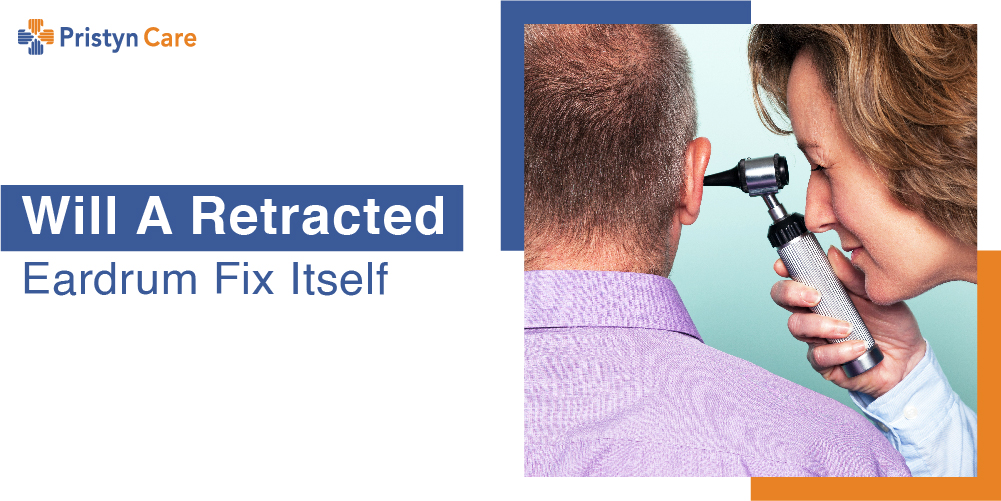
Table of Contents
What is the Retraction of Eardrum?
The retracted eardrum is pushing of the eardrum inward towards the middle ear. To understand the condition better, let’s have a look at the ear anatomy. Have you ever wondered how are you able to hear?
There are three parts of the ear that work together to help you hear- the outer ear, middle ear, and inner ear. Your listening skills depend on a thin membrane inside the ear, which is known as a tympanic membrane.
Commonly known as the eardrum, this is a tissue layer that separates the outer part of the ear from the middle ear. When the sound waves hit the eardrum, there are vibrations that are converted to signals that let you hear. Due to some particular activities, this eardrum can be pushed back inside the ear, which is known as the retracted eardrum.
Why the eardrum retracts?
This eardrum can retract or in other words back in due to several types of trauma such as-
- Inserting sharp objects such as cotton swab or toothpick too deep inside the ear
- A blow to the ear
- Injury to the head
- Sudden change in air pressure such as flying or scuba diving
Some of the conditions that can contribute to a retracted eardrum are mentioned below-
- Infections in the middle ear
- A condition known as otitis media in which the ear gets filled with fluid
- Sinusitis (Also Read: How to cure chronic sinus permanently? )
- Infection in the upper respiratory
- Chronic allergies
- Enlargement of tonsils or adenoids that blocks the tube which restricts draining
- Medical history of a ruptured eardrum or ruptured eardrum that didn’t heal the first time
How to know if the eardrum has retracted?
In most cases, there are no symptoms of a retracted eardrum. It can cause some symptoms when the retracted eardrum puts pressure on other structures within the ear. Some symptoms are-
- Pain inside the ear
- Fluid coming out of the ear
- Difficulty in hearing on a temporary basis
How serious is retracted eardrum?
In general, the retraction of the eardrum is not life-threatening. However, delaying the treatment is not a prudent decision. When the retracted eardrum is left untreated, there is a buildup of negative pressure inside the middle ear leads to other complications such as-
- Ear canal erosion
- Erosion of small bones in the ear
- Abnormal growth of skin growth in the ear, also known as cholesteatoma
How the retracted eardrum is diagnosed?
When you visit the clinic with an earache or drainage, the doctor starts the diagnosis by asking questions about the symptoms and confirms the presence of any infection. Followed by this, the ENT doctor uses an otoscope to look inside the ear. This helps to see the doctor if the eardrum is pushed inside or not.
How to treat the retracted eardrum?
The not-so severe cases of the retracted eardrum can improve on its own if the pressure inside the eardrum returns to the normal level. However, the treatment of retracted eardrum should be done with proper consultation with the E.N.T doctor.
The treatment depends on the underlying cause due to which the eardrum retracted. Sometimes the doctor recommends nasal decongestants to normalize the nasal pressure.
In some cases, draining the eardrum will be sufficient for treating the retracted eardrum. The doctor can insert ear tubes into the eardrums to drain the excess wax from the ear. In a procedure known as a myringotomy, the doctor places tubes by making a small cut in the eardrum. Hence, this helps to pressure from the middle ear and treat the retraction.
It becomes necessary to have surgical intervention when the retracted eardrum starts to press on the bones of the ear. This eventually leads to hearing loss. One of the most-effective treatment for retracted eardrum is tympanoplasty.
In tympanoplasty, the ENT doctor removes the damaged part of the eardrum and replaces it with a small piece of cartilage from the outer ear.
For someone looking for a solution for the retracted eardrum, can visit Pristyn Care clinics for consultation with the doctor.







